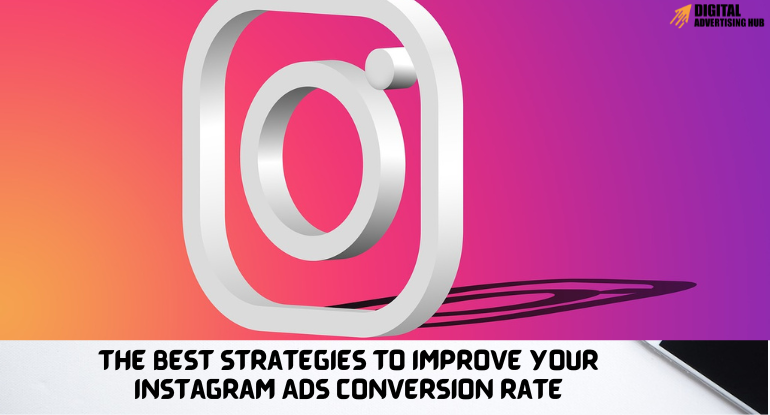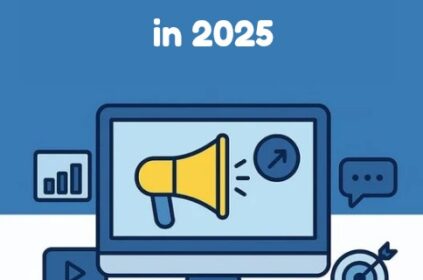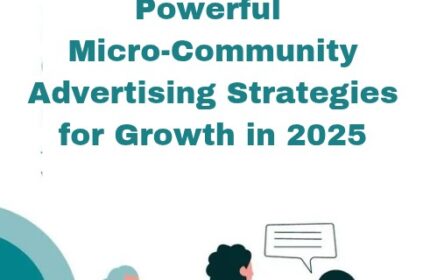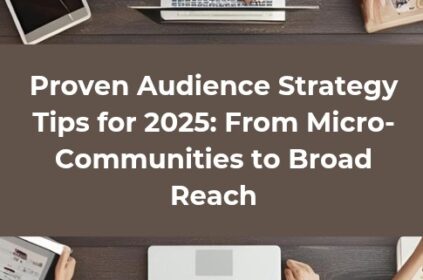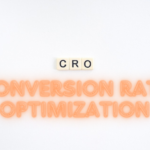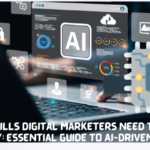Welcome to our exploration of Instagram Ads Conversion Rate Strategies. In the world of digital marketing, Instagram stands out as a powerful platform for businesses aiming to connect with their audience.
With billions of users worldwide, it offers immense potential for driving conversions. However, achieving high conversion rates on Instagram ads requires careful planning and execution.
In this comprehensive blog post, we’ll consider the practical strategies designed to help you optimize your Instagram ad campaigns. Whether you’re new to Instagram advertising or looking to improve your existing efforts, the insights shared here will provide actionable steps to enhance your results.
We’ll cover various aspects of conversion rate optimization, including creating engaging ad content, targeting the right audience, optimizing ad placement, and continuous testing and refinement.
By implementing these strategies, you’ll be better equipped to maximize the effectiveness of your Instagram ads and drive meaningful results for your business.
So, let’s get started and uncover the strategies that will help you unlock the full potential of your Instagram advertising efforts.
Understanding Instagram Ads Conversion Rate

Definition of Conversion Rate on Instagram
Conversion rate on Instagram ads refers to the percentage of users who take a desired action after interacting with your ad. This action could include making a purchase, signing up for a newsletter, downloading an app, or any other goal you’ve defined for your campaign.
By tracking conversion rates, you can gauge the effectiveness of your ads in driving tangible outcomes for your business.
Key Metrics to Track and Analyze:
When evaluating Instagram ads conversion rate, it’s essential to consider various metrics to gain insights into campaign performance. Some key metrics to track include:
#1. Click-through rate (CTR): The percentage of users who click on your ad after seeing it.
#2. Conversion rate: The percentage of users who complete the desired action after clicking on your ad.
#3. Cost per conversion: The average amount you spend to acquire each conversion.
By analyzing these metrics, you can identify strengths and weaknesses in your campaigns and make informed decisions to optimize performance.
Common Challenges Faced by Marketers:

Despite the potential of Instagram advertising, marketers often encounter challenges in achieving high conversion rates. Some common obstacles include:
#1. Ad Fatigue:
Ad fatigue occurs when users are repeatedly exposed to the same or similar advertisements, leading to a decline in engagement and conversion rates over time.
This phenomenon can arise due to factors such as frequency capping settings, limited ad variations, or prolonged campaign durations without refreshing ad creative. As users become accustomed to seeing the same content repeatedly, they may develop banner blindness, where they instinctively ignore or scroll past ads without engaging with them.
Ad fatigue can significantly impact campaign performance by diminishing ad effectiveness and reducing the likelihood of conversions.
#2. Audience Targeting Limitations:
Effective audience targeting is essential for reaching users who are most likely to engage with your ads and take desired actions. However, marketers may face challenges in accurately defining and reaching their target audience on Instagram.
This can occur due to limitations in available targeting options, inaccuracies in audience data, or overly broad targeting parameters. Inadequate audience segmentation can result in ads being served to irrelevant or uninterested users, leading to low engagement and conversion rates.
Marketers must continually refine their targeting strategies to ensure they are reaching the right audience with their ads.
#3. Ad Relevance and Quality:
The effectiveness of an Instagram ad hinges on its relevance and quality in capturing users’ attention and persuading them to take action. Marketers may encounter challenges in creating compelling ad creatives that resonate with their target audience and align with their campaign objectives.
Common issues include poor design, lack of clear messaging, or mismatched visuals and copy. Additionally, ads that feel overly promotional or intrusive may deter users from engaging with them, resulting in lower conversion rates. Learn about 6 copywriting tips to improve your ad message quality.
Marketers must strive to produce high-quality and relevant ad content that adds value to users’ browsing experiences and encourages meaningful interactions.
#4. Conversion Tracking Issues:
Accurate conversion tracking is essential for measuring the success of Instagram ad campaigns and optimizing performance. However, marketers may encounter challenges in setting up and tracking conversions effectively.
This can be due to technical issues with tracking pixels or tags, discrepancies in attribution models, or limitations in tracking capabilities across devices and platforms. Inaccurate or incomplete conversion data can hinder marketers’ ability to assess campaign performance accurately and make data-driven optimizations.
Marketers must ensure robust conversion tracking mechanisms are in place and regularly monitor and troubleshoot tracking issues to maintain campaign effectiveness.
Addressing these challenges requires a combination of strategic planning, creative execution, and ongoing optimization efforts. By identifying and overcoming these obstacles, marketers can enhance their Instagram ad campaigns’ effectiveness and drive better conversion rates and ROI.
By gaining a deeper understanding of conversion rate metrics and the challenges inherent in Instagram advertising, you’ll be better equipped to devise targeted strategies to enhance your campaign performance and drive meaningful results.
In the following sections, we’ll explore actionable tactics for optimizing various aspects of your Instagram ad campaigns to improve conversion rates.
How to Craft Compelling Ad Creatives
Effective ad creatives play a pivotal role in capturing users’ attention and driving engagement on Instagram. Let us explore strategies for crafting compelling ad creatives that resonate with your target audience and compel them to take action.
#1. Importance of Visual Appeal:
Visual content is paramount on Instagram, making it essential for marketers to prioritize visual appeal in their ad creatives. High-quality images and videos that are visually striking, aesthetically pleasing, and relevant to your brand and campaign objectives are more likely to grab users’ attention as they scroll through their feeds.
Leveraging vibrant colors, captivating imagery, and engaging visuals can help your ads stand out amidst the sea of content on Instagram and increase the likelihood of engagement and conversion.
Tips for Creating Engaging Ad Content:
#1. Tell a Story: Use your ad creative to tell a compelling story that resonates with your audience and evokes emotion. Whether it’s showcasing your brand’s journey, highlighting customer testimonials, or illustrating the benefits of your products or services, storytelling can create a deeper connection with users and drive engagement, thereby increasing your Instagram ads conversion rate.
#2. Be Authentic: Authenticity is key to building trust and credibility with your audience. Avoid overly polished or staged content and opt for authentic, genuine imagery that reflects your brand’s values and personality.
User-generated content (UGC) can be particularly effective in showcasing real-life experiences and fostering authenticity.
#3. Keep it Concise: With users’ attention spans becoming increasingly shorter, it’s important to convey your message quickly and succinctly. Use clear, concise copy that communicates your value proposition and call-to-action (CTA) effectively without overwhelming users with too much information.
#4. Experiment with Formats: Explore different ad formats available on Instagram, such as carousel ads, slideshow ads, and Instagram Stories ads, to diversify your creative approach and keep users engaged.
Each format offers unique opportunities for storytelling and interactivity, allowing you to experiment with different content formats and creative elements to see what resonates best with your audience.
Leveraging Calls-to-Action (CTAs):
A strong call-to-action (CTA) is essential for guiding users towards the desired action after engaging with your ad. Whether it’s directing users to shop now, learn more, sign up, or download, your CTA should be clear, compelling, and aligned with your campaign objectives.
Experiment with different CTAs and placement options to see which prompts drive the highest conversion rates and tailor your ad creatives accordingly.
By focusing on visual appeal, storytelling, authenticity, and strategic use of CTAs, you can create ad creatives that captivate your audience’s attention, drive engagement, and ultimately, increase Instagram ads conversion rate.
How Do I Target the Right Audience?

Effective audience targeting is essential for ensuring your Instagram ads reach the most relevant users who are likely to engage with your content and take desired actions. In this section, we’ll explore strategies for targeting the right audience on Instagram to maximize the effectiveness of your ad campaigns.
Utilizing Instagram’s Robust Targeting Options:
Instagram offers a wide range of targeting options to help you reach your ideal audience with precision. These options include demographic targeting (such as age, gender, location), interest targeting (based on users’ interests and behaviors), and connection targeting (targeting users who have a specific relationship with your business or those who are connected to your existing followers).
By leveraging these targeting options, you can tailor your ad campaigns to reach users who are most likely to be interested in your products or services.
Strategies for Segmenting Audiences:
Effective audience segmentation allows you to divide your target audience into smaller, more specific groups based on shared characteristics or behaviors. By segmenting your audience, you can create personalized ad experiences that resonate with different audience segments and drive higher engagement and Instagram ads conversion rate.
Consider segmenting your audience based on factors such as demographics, interests, purchasing behavior, or engagement with your brand. Experiment with different audience segments and messaging to identify which segments respond best to your ads.
Custom Audience Creation and Lookalike Audience Targeting:
Custom audience creation allows you to target users who have already interacted with your business or shown interest in your products or services. You can create custom audiences based on website visitors, email subscribers, app users, or users who have engaged with your content on Instagram or Facebook.
Additionally, lookalike audience targeting enables you to reach new users who share similar characteristics to your existing customers or audience segments. By leveraging custom and lookalike audiences, you can expand your reach while maintaining relevance. This may lead to higher Instagram ads conversion rate
Testing and Refining Audience Targeting:
Audience targeting is not a one-size-fits-all approach, and it’s essential to continually test and refine your targeting strategies to optimize campaign performance. Experiment with different targeting parameters, audience segments, and ad creative variations to identify which combinations drive the highest engagement and conversion rates.
Monitor key metrics such as click-through rates, conversion rates, and return on ad spend (ROAS) to evaluate the effectiveness of your targeting efforts and make data-driven optimizations accordingly.
By utilizing Instagram’s robust targeting options, segmenting your audience effectively, leveraging custom and lookalike audiences, and continuously testing and refining your targeting strategies, you can ensure your ad campaigns reach the right audience with the right message at the right time, driving higher engagement and conversion rates on Instagram.
Optimizing Ad Placement and Formats
Choosing the right ad placement and format is crucial for maximizing the visibility and effectiveness of your Instagram ads. In this section, we’ll explore strategies for optimizing ad placement and formats to drive higher engagement and conversion rates.
Overview of Different Ad Formats:
Instagram offers a variety of ad formats, each with its unique features and advantages. Some of the most popular ad formats include:
#1. Image Ads: The most basic format featuring a single, high-quality image. Great for showcasing products, promoting events, or sharing a clear message.
#2. Video Ads: Captivate your audience with short video clips (up to 60 seconds) that tell a story, showcase product features, or demonstrate tutorials.
#3. Carousel Ads: Showcase multiple images or videos (up to 10) within a single ad. Perfect for highlighting product variations, showcasing a process, or creating a mini-storyboard.
#4. Stories Ads: Immerse viewers in full-screen, disappearing content through photo or video Stories ads. Leverage features like polls, quizzes, and swipe-up links for engagement.
#5. Collection Ads: Create a shoppable experience directly within the ad. Showcase multiple products with linked details and purchase options, simplifying the path to conversion.
#6. Explore Ads: Reach users actively browsing the Explore tab with captivating image or video ads. Great for brand awareness campaigns and expanding your reach.
#7. Shopping Ads: Promote specific products from your catalog with high-quality images and direct links to product pages. Ideal for driving product discovery and sales.
#8. Reels Ads: Utilize the popular Reels format for engaging short-form video ads (up to 15 seconds). Perfect for creative storytelling, showcasing product use cases, and tapping into trending content.
Selecting the Most Suitable Ad Format:
When choosing the right ad format for your campaign, consider factors such as your campaign objectives, target audience, and the type of content you’re promoting. For example, if you’re looking to drive engagement and brand awareness, Instagram Stories ads may be an ideal choice due to their immersive nature and high engagement rates.
On the other hand, if you’re promoting a product or showcasing a collection of items, carousel ads in users’ feeds may allow you to highlight multiple products and features in a single ad unit.
Best Practices for Ad Placement:
In addition to selecting the right ad format, it’s essential to consider placement options that will maximize the visibility and impact of your ads. Instagram offers various placement options, including automatic placements, which allow Facebook’s algorithm to optimize ad delivery across different placements based on performance.
Alternatively, you can manually select specific ad placements based on your campaign objectives and audience preferences. Experiment with different placement options to determine which placements drive the highest engagement and conversion rates for your ads.
Optimizing Ad Creative for Each Format:
Different ad formats require tailored creative assets to maximize their effectiveness. When creating ad creatives for different formats, consider factors such as aspect ratio, video length, and design elements that will ensure your ads look visually appealing and engaging across all devices and placements.
For example, vertical video ads are best suited for Instagram Stories, while square or landscape images may work better for feed ads. Test different creative variations and formats to identify which combinations resonate best with your audience and drive the highest conversion rates.
By understanding the strengths and advantages of different ad formats, selecting the most suitable format for your campaign objectives, optimizing ad placement for maximum visibility, and tailoring ad creative for each format, you can enhance the effectiveness of your Instagram ads and drive higher engagement and conversion rates.
Monitoring and Analyzing Performance
Effective monitoring and analysis of performance metrics are essential for assessing the success of your Instagram ad campaigns and informing future strategies and optimizations.
Tools and Metrics for Monitoring Performance:
Utilize a variety of tools and metrics to monitor the performance of your Instagram ad campaigns effectively. Some key tools and metrics to consider include:
#1. Ads Manager: Instagram’s Ads Manager provides detailed insights into your ad campaigns, allowing you to track metrics such as reach, impressions, clicks, conversions, and more. Use Ads Manager to monitor campaign performance in real-time and make data-driven decisions.
#2. Google Analytics: Integrate Google Analytics with your Instagram ad campaigns to track website traffic, user behavior, and conversions originating from your ads. Analyze metrics such as bounce rate, session duration, and goal completions to understand the impact of your ad campaigns on website engagement and conversions.
#3. Third-Party Analytics Tools: Consider using third-party analytics tools such as Hootsuite, Sprout Social, or Buffer to gain additional insights into your Instagram ad performance, audience demographics, engagement metrics, and more. These tools can provide valuable data to supplement the insights available through native ad platforms.
Analyzing Conversion Funnels:
Analyze conversion funnels to understand the user journey from ad impression to conversion and identify potential bottlenecks or points of friction that may be impacting conversion rates.
Track metrics such as ad impressions, clicks, website visits, add-to-cart actions, and completed purchases to assess the effectiveness of each stage of the conversion funnel. Identify areas for optimization, such as optimizing landing pages, streamlining checkout processes, or adjusting ad messaging, to improve conversion rates and drive more conversions.
Using Data-Driven Insights for Optimization:
Leverage data-driven insights from performance analytics to inform future campaign strategies and optimizations. Identify trends, patterns, and correlations in the data to understand what’s working well and what needs improvement.
Test hypotheses, iterate on successful strategies, and implement continuous optimizations to refine your Instagram ad campaigns for maximum effectiveness and ROI.
By analyzing performance metrics and leveraging data-driven insights, you can make informed decisions to optimize your Instagram ad campaigns and drive better results over time.
By effectively monitoring and analyzing performance metrics, establishing KPIs and benchmarks, analyzing conversion funnels, and using data-driven insights for optimization, you can assess the effectiveness of your Instagram ad campaigns, identify areas for improvement, and drive continuous growth and success.
Conclusion
In the realm of Instagram Ads Conversion Rate Strategies, success lies in the strategic fusion of creativity and data-driven insights. Crafting engaging ad creatives, targeting the right audience segments, optimizing ad placement and formats, and continuously refining strategies are paramount.
Remember, the digital landscape evolves rapidly, so agility and adaptability are key. By prioritizing user experience, fostering meaningful connections, and staying abreast of emerging trends, businesses can unlock the full potential of Instagram Ads to drive conversions and achieve sustainable growth.
Ready to take your Instagram advertising to the next level? Stay informed and inspired by subscribing to our newsletter for the latest tips, trends, and insights in digital marketing. Thank you for joining us on this journey toward optimizing conversion rates on Instagram. Here’s to your continued success in the ever-evolving world of digital marketing.

